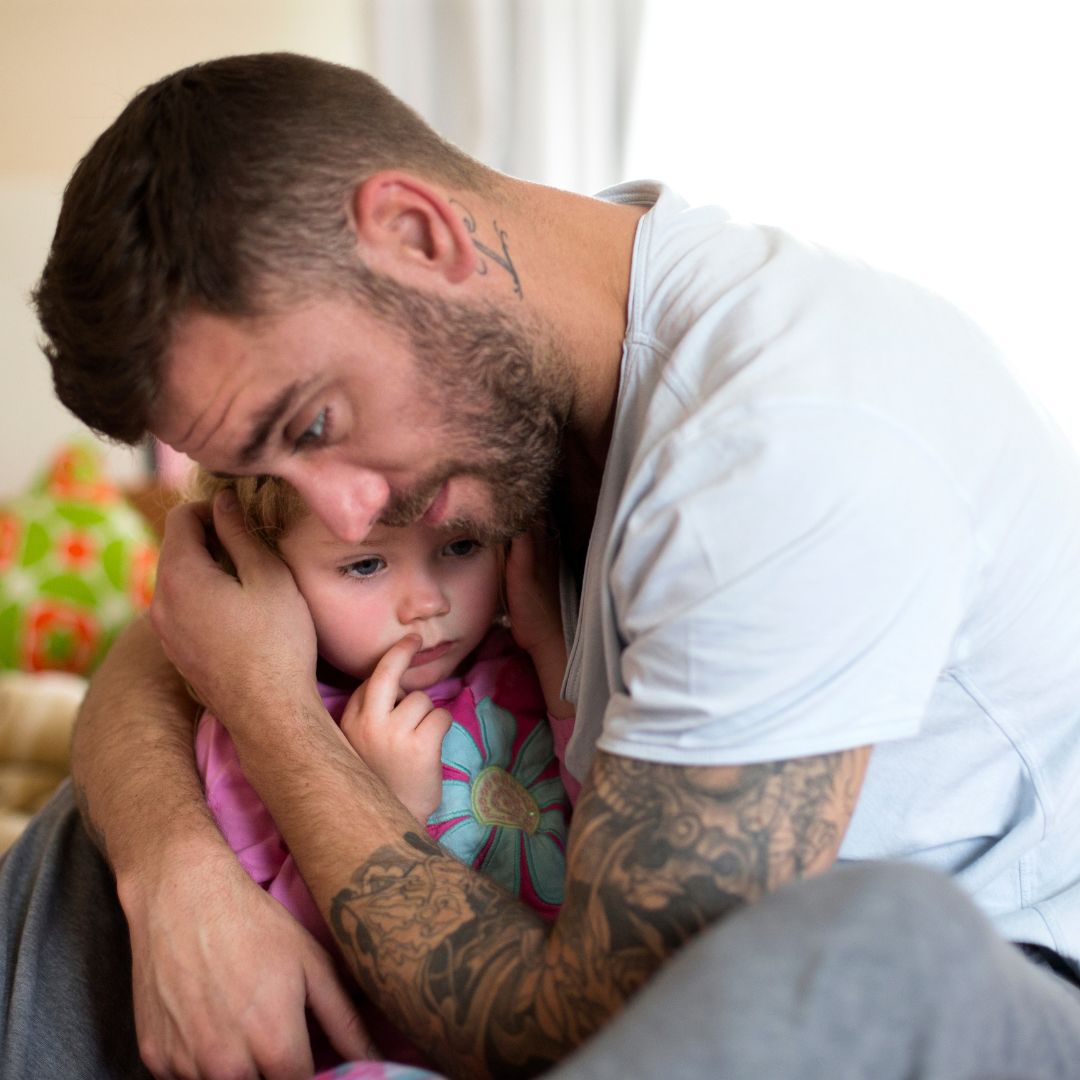April is recognized as Child Abuse Prevention Month, a crucial time for us to turn our collective focus toward a deeply troubling issue that affects too many children across America and around the world. Child abuse, including physical, emotional, and sexual harm, as well as neglect, is a devastating reality that leaves scars not just on the body, but on the soul and psyche as well.
Shockingly, the Centers for Disease Control and Prevention revealed that, in 2020, 1,750 kids died of abuse and neglect in the United States. These kids may also experience long-lasting effects that can carry into adulthood—ranging from physical injuries to severe emotional and mental health issues.
Observing Child Abuse Prevention Month goes beyond mere reflection; it’s a proactive call to action. It reminds us of the critical need to create safe, nurturing spaces where children can flourish. This month motivates us to learn and spread awareness about the indicators of abuse, to bolster families and organizations tirelessly safeguarding our young, and to champion policies and practices that place children’s well-being and security at the forefront.
By uniting as a community of caregivers, educators, neighbors, and friends, we have the power to significantly impact the lives of children, creating a brighter future where every child is valued and safe.
Please Note:
To all caregivers, including nannies and parents, along with every adult in our community, remember that your vigilance can form the most significant barrier against child abuse.
Make a Difference – Become an advocate! Are you committed to improving the lives of neglected children? We encourage families and nannies to make a real impact by getting involved with or supporting CASA (Court Appointed Special Advocates). Join us in this vital mission to provide a voice for children in need. Learn how you can make a difference at nationalcasagal.org

History and Significance
The origins of Child Abuse Prevention Month are traced back to 1974s, a period that marked a growing awareness and understanding of the critical issue of child abuse and neglect. It was during this time that the Child Abuse Prevention and Treatment Act (CAPTA) was a reflection of a collective acknowledgment of the need to bring the issue of child abuse into the national dialogue, foster greater understanding, and spur action to protect our most vulnerable members of society—kids.
The impact of awareness campaigns throughout National Child Abuse Prevention Month over the years has been profound and far-reaching. These campaigns serve multiple purposes:
- they educate the public about the signs of child abuse and neglect,
- promote strategies to prevent it
- and highlight the vital role everyone can play in protecting children.
By offering resources, support, and education, these campaigns empower individuals and communities to create safer environments for children.
Types of Child Abuse
While we recognize the critical importance of preventing child abuse, there remains a gap in widespread understanding of its various forms. Knowing the different types of child abuse can empower us to identify and address them more effectively, thereby protecting children and fostering their well-being.
Physical Abuse
Physical abuse involves inflicting physical harm upon a child, which might include actions such as hitting, beating, burning, or biting. An example of this could be a caregiver causing physical injury to a child out of anger or frustration. Studies show that the effects of physical abuse extend beyond immediate physical injuries, potentially resulting in developmental delays, psychiatric disorders, and increased risk of engaging in violent behavior later in life. The biological stress response to such trauma can also lead to chronic health issues like heart disease and diabetes.
Emotional Abuse
Emotional abuse, or psychological abuse, damages a child’s self-esteem and emotional well-being. It includes acts such as verbal abuse, constant criticism, threats, rejection, and isolation. For instance, a parent repeatedly telling a child they are worthless or unloved constitutes emotional abuse. Studies have linked emotional abuse to serious effects on mental health, including anxiety, depression, and suicidal ideation, highlighting the need for early intervention and support to mitigate these long-term consequences.
Sexual Abuse
Sexual abuse involves engaging a child in sexual acts or behaviors. This can range from physical contact or assault to non-contact acts like exposure, voyeurism, or involving a child in pornography. An example here could be an adult exposing themselves to a child or coercing the child into engaging in sexual activities. Research underscores the severe psychological impact of sexual abuse, leading to issues such as post-traumatic stress disorder (PTSD), negative self-image, and difficulty in forming healthy relationships. Sexual abuse can also have physical consequences, including injuries and an increased risk of sexually transmitted infections (STIs).
Neglect
Neglect occurs when a caregiver fails to meet a child’s basic needs, including food, clothing, shelter, medical care, and emotional nurturing. An example would be parents not providing adequate meals, resulting in malnutrition, or failing to take a sick child to the doctor. Neglect can have devastating effects on a child’s physical health, growth, and development. Research points to neglected children exhibiting significant delays in physical growth and cognitive development, along with emotional and social issues. Neglect, being less overt than other forms of abuse, requires vigilance to detect and address.
Risk Factors and Vulnerable Populations
Understanding the widespread nature of child abuse sheds light on a somber reality; yet, it’s a must to recognize that some groups are more vulnerable than others.
Socioeconomic Factors
Socioeconomic factors play a significant role in the risk of child abuse. Families living in poverty, for instance, may experience higher levels of stress due to financial instability, inadequate housing, and limited access to healthcare and education. This stress, in turn, can strain the parental capacity for nurturing and increase the likelihood of various forms of abuse. Research underscores the link between socioeconomic disadvantage and the increased risk of child neglect and abuse. The pressures of economic hardship can lead to parental frustration, depression, and anxiety, which may unfortunately be redirected toward children.
Family Dynamics
The structure and dynamics within a family also contribute to the risk of child abuse. Families where there is a lack of emotional bonding, high conflict, or where domestic violence is present are particularly at risk. Children growing up in such environments may witness or experience aggressive behaviors, setting a precedent for abuse. Additionally, families with a history of abuse, where parents or guardians were victims themselves, may inadvertently perpetuate cycles of abusive behavior. Studies have shown that positive family dynamics, such as open communication, emotional support, and strong parent-child bonds, can act as protective factors against child abuse.
Community Influences
The broader community environment plays a critical role in either worsening or lessening the risk of child abuse. Communities lacking in cohesion, social support, and accessible resources for families are more likely to see higher incidences of child abuse. On the flip side, strong, supportive communities can offer a network of resources and emotional support that acts as a buffer against the stressors that may lead to abuse. Community-based interventions, such as outreach programs, public awareness campaigns, and accessible mental health services, are important in preventing child abuse and supporting at-risk families.
Preventive Measures
To protect and nurture our youngest and most vulnerable, it’s clear that prevention holds the key. “Alone we can do so little; together we can do so much” – Helen Keller’s words remind us of the power of collective action in combating child abuse. By banding together to foster a culture of awareness, support, and intervention, we can make significant strides toward a safer future for children everywhere.
Education and Awareness Programs
Education and awareness programs are the bedrock of preventing child abuse. By informing the public about the signs of abuse, the long-term effects it can have on children, and ways to intervene safely, we equip individuals and communities with the knowledge needed to protect children. Initiatives such as the Darkness to Light’s Stewards of Children training provide adults with strategies to prevent, recognize, and react responsibly to child sexual abuse. Schools, community centers, and workplaces can host these programs, creating a widespread understanding and vigilance that serves as the first line of defense against abuse.
Early Intervention Strategies
Early intervention strategies are critical for families at risk of child abuse. Programs like Healthy Families America focus on visiting homes to offer support, parenting tips, and educational materials to parents and caregivers. These programs aim to strengthen family bonds, improve parenting skills, and reduce stressors that could lead to abuse. By identifying and addressing potential issues before they escalate, early intervention can change the trajectory for children in at-risk families, fostering a positive environment that nurtures their growth and development.
Supportive Services for Families
Supportive services for families play a pivotal role in preventing child abuse by providing resources that alleviate stressors, such as financial hardship, lack of social support, and isolation. Organizations like The National Parent Helpline and Parents Anonymous offer emotional support and practical advice to parents struggling with parenting challenges. Access to professional childcare, mental health services, and community centers provides crucial support systems that can prevent the sense of isolation and overwhelm that often precedes abuse. Through social programs and non-profit organizations, supportive services can fortify families against the pressures that might otherwise lead to neglect or abuse.
Final Thoughts
Every child deserves the warmth of safety and the promise of a bright future. The harsh reality of child abuse, however, casts a long shadow over this ideal, affecting innocent lives and the fabric of communities across the globe. It is a call to action for every individual, every family, and every community to stand in unity against this scourge. By interweaving together our efforts in education, raising awareness, and support, we can unravel the cycle of abuse and knit a stronger, more compassionate world where every child can flourish.
The fight against child abuse is not just a campaign; it is a testament to our humanity.



